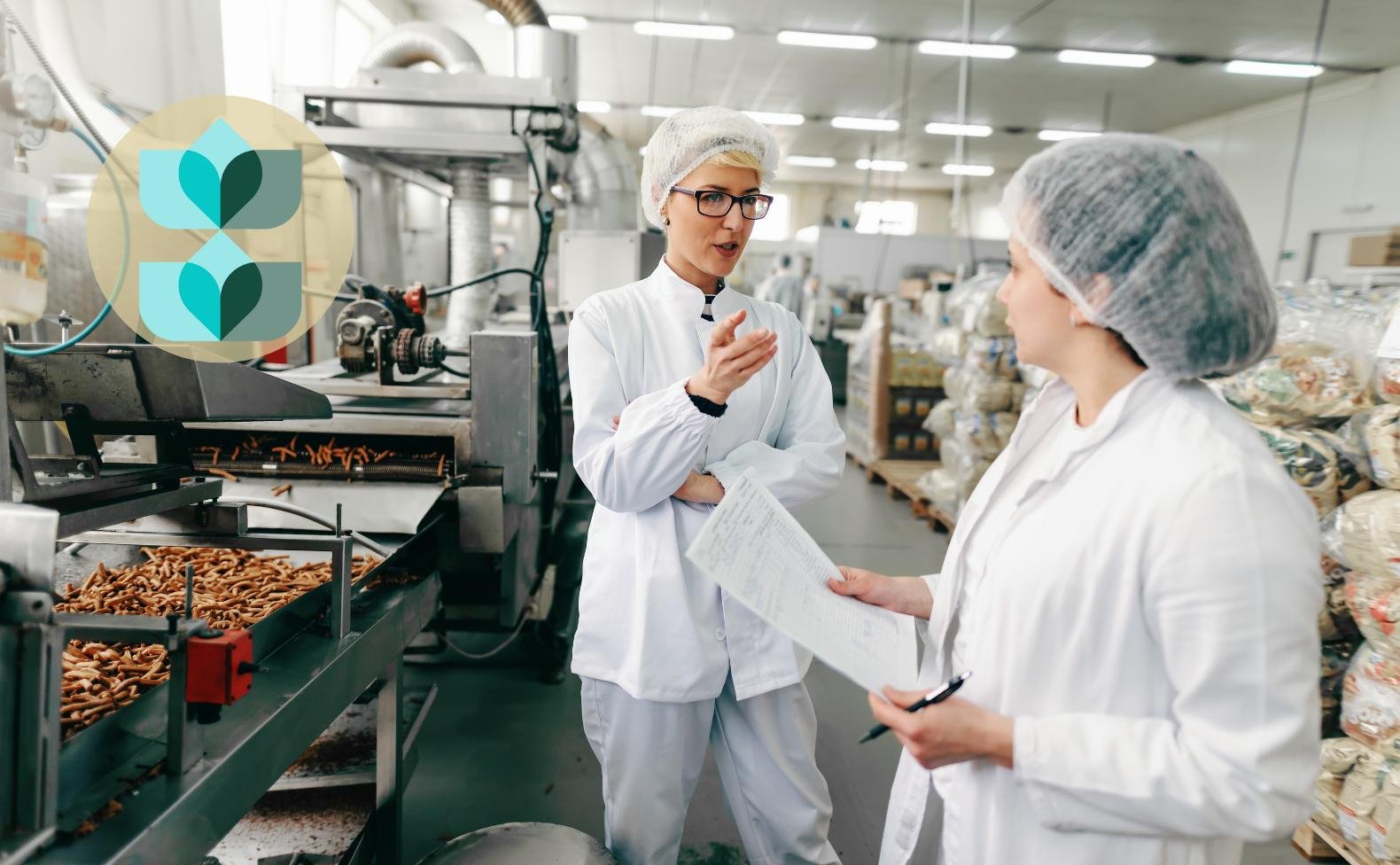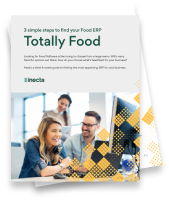The business world continues to evolve as digital platforms and solutions arise at every turn. Any business that wants to thrive in the next decade or so needs to start implementing digitization efforts in their business to remain efficient and relevant.
But what most decision-makers in the food and beverage production industry want to know is what tools they should prioritize first. There are infinitely many solutions that can help businesses in this category, but enterprise resource planning must be at the top of that list. Up to 53% of businesses believe ERP software should be a priority investment.
But what are ERP systems and why is there a need for food ERP solutions?
Understanding Food Traceability and Its Importance
.jpg?width=1313&height=875&name=Untitled%20design%20(15).jpg)
Before delving into the role of ERP, it is essential to comprehend the concept of food traceability—a term widely recognized by food manufacturers. Food traceability software pertains to monitoring the progress of food items throughout specific stages of production, processing, and transportation. This practice enables food producers, associated participants, and partners to maintain quality control during manufacturing, packaging, and shipping processes.
In the absence of adequate tracking, food safety can be jeopardized. ERP systems help maintain food traceability by utilizing digital solutions that automate and monitor food-related operations, serving as an inventory management solution. The Food Safety Modernization Act emphasizes the importance of food safety and the need for effective inventory tracking.
Research indicates that 95% of businesses experienced process enhancements following ERP implementation, and the food sector is no exception. By adopting a food traceability software within an ERP system, the information is stored in a cloud-based platform, which can be accessed by anyone, anywhere, using only a computer and internet connection. This makes it significantly easier to track and update data.
Essential Features of the best Food Traceability Software
So, what are some essential features in food traceability software? Let’s look at three non-negotiable components that an effective system will have.
Food Traceability and Inventory Management
An efficient inventory management system is vital for all businesses, particularly those in the food industry. Food items are perishable, making it essential to monitor expiration dates, batch numbers, and product volumes to guarantee food safety and minimize waste. Comprehensive food traceability software should encompass robust inventory management and control capabilities that enable you to track your products in real-time and maintain precise records.
An excellent food traceability software solution should also offer inventory control features, such as automatic reordering, stock level alerts, and predictive analytics. These tools can help you optimize your inventory control levels, avoid stockouts and overstocking, and improve overall supply chain efficiency.
Supply Chain Visibility and Raw Materials Tracking

Complete visibility into your entire supply chain is essential for ensuring food safety and traceability. Food traceability software should provide comprehensive information about the origin and handling of raw materials and ingredients used in your products. This data is critical for identifying any potential contamination sources, responding to recalls, and understanding the overall quality of your products.
Raw materials tracking features should allow you to capture important data such as supplier information, lot numbers, expiration dates, and certification documents. This information should be easily accessible and searchable, allowing you to quickly trace any issues back to their source and take appropriate action.
Production Planning and Scheduling
Efficient production planning and scheduling are crucial for food manufacturers to optimize their operations and meet customer demand. Food traceability software should offer tools for production planning and scheduling, helping you to allocate resources, manage production lines, and forecast demand accurately.
These features should be flexible and customizable, allowing you to create production schedules based on various factors such as resource availability, production capacity, and customer orders. By implementing effective production planning and scheduling tools, you can reduce lead times, minimize waste, ensure food safety, and improve overall operational efficiency.
Quality Management and Food Safety Compliance
In the food industry, ensuring top-notch quality and safety is paramount for businesses. A food traceability software, serving as an inventory management solution, should encompass features geared towards quality management and compliance. This ultimately aids in tracking and regulating the excellence of your products from start to finish during the entire production process.
These features should allow you to create and manage quality control plans and food safety, track inspection results, and maintain detailed records of any quality issues or non-conformances. Additionally, the software should provide tools for managing food safety compliance, such as HACCP plans and FSMA documentation.
By using food traceability software with robust quality management and compliance features, you can ensure your products meet the highest standards and protect your customers and your business's reputation.
Comprehensive Food Traceability and Recall Management
.jpg?width=1311&height=875&name=Untitled%20design%20(38).jpg)
In case of a recall or contamination event, it is vital to have a reliable and comprehensive food traceability software at your disposal. Such software should offer in-depth insights into the complete lifecycle of your products, from raw materials to the final product, enabling prompt identification and resolution of any problems.
Recall management capabilities should encompass the swift isolation of affected products, communication with pertinent stakeholders, and the generation of reports for regulatory bodies in compliance with food industry standards and the Food Safety Modernization Act. By implementing a robust digital food safety system with food traceability and recall management features, you can effectively manage risks, reduce the consequences of a recall, safeguard your customers, and uphold your business's reputation through efficient batch tracking and risk management.
Selecting the Ideal Food Traceability Systems for Streamlining Your Food Manufacturing Process
.png?width=445&height=445&name=Untitled%20design%20(67).png)
When deciding on food traceability software for your enterprise, it's crucial to take into account the functions and capabilities that best suit your unique requirements. The six features highlighted in this article are vital in guaranteeing food safety, traceability, and overall operational effectiveness.
In order to fulfill your food traceability needs, think about implementing inecta Food ERP. This all-inclusive solution provides powerful inventory management, supply chain transparency, production planning, quality management, and recall management features essential for a seamless food manufacturing process.











Free Valuable Resource!
3 simple steps to find your Food ERP
Free Valuable Resource!
3 simple steps to find your Food ERP
*We will never sell your information. Keeping your data and privacy secure is our highest concern.